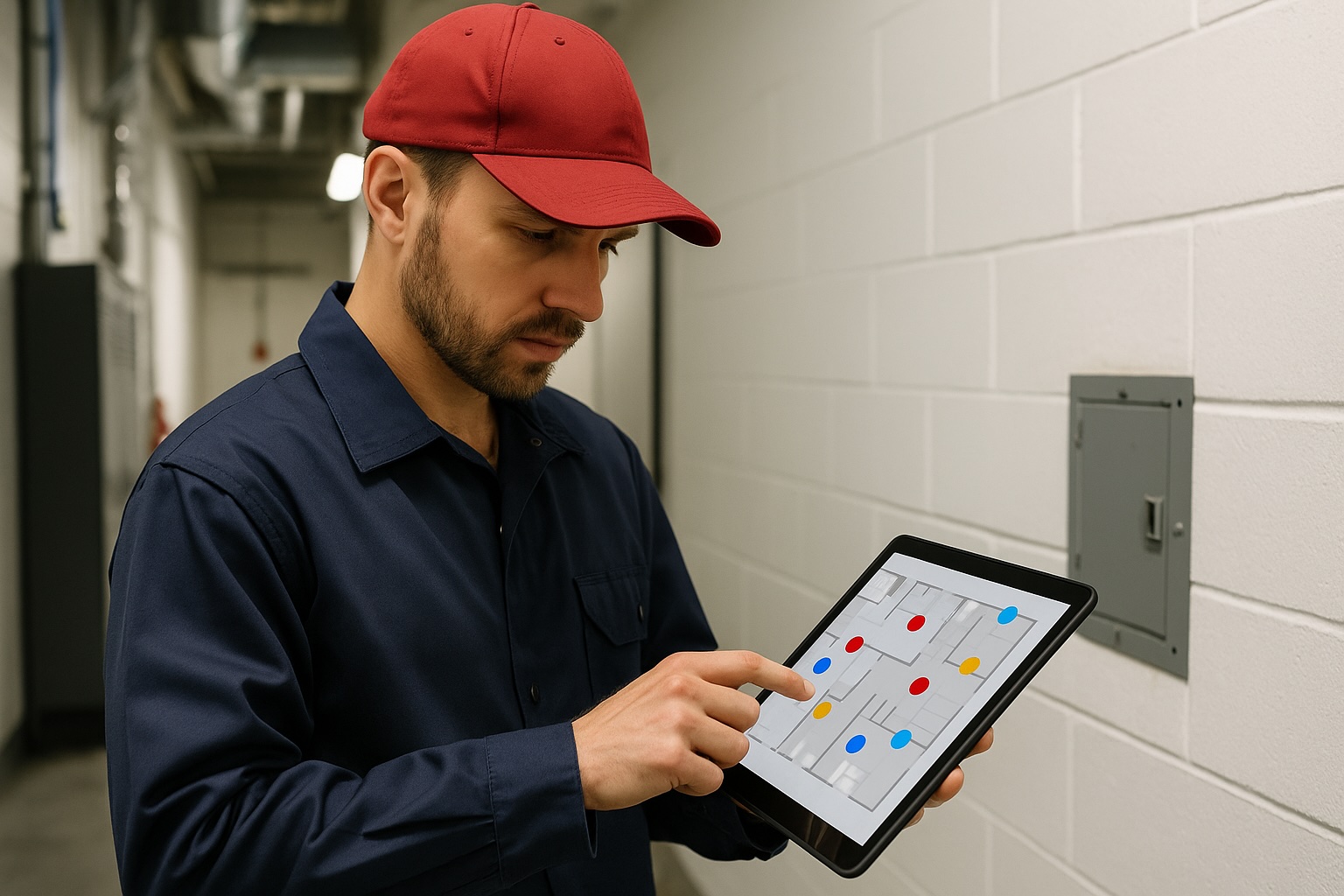10 tips to improve field profitability of interventions
Field interventions are at the heart of operations for many companies, whether it’s maintenance, installation, or home services. However, they can quickly become costly and time-consuming if not optimized. Fortunately, modern tools and well-thought-out practices make it possible to maximize their profitability. In this article, we explore 10 tips to improve your field operations while ensuring impeccable service quality.
1. Automate repetitive administrative tasks
Administrative management represents a significant portion of operational costs. Tasks such as writing intervention reports, sending documents to clients, or invoicing can quickly consume a large part of your resources. Yet, these processes can be automated thanks to efficient digital solutions, as detailed in the Entreprendre magazine article.
Software like Cadulis, for example, allows you to automatically generate standardized reports in just a few clicks. These reports can then be sent directly to the client or order giver, without manual intervention. The result? Your administrative team saves several hours per week, which can be allocated to more strategic tasks, such as managing unforeseen events or improving internal processes.
On average, automation reduces administrative needs by 38%, which represents substantial savings for medium and large-sized companies.
2. Centralize technical information
A poorly informed technician risks wasting time. For example, they may find themselves without the right equipment or without the necessary information to solve a problem on site. These inefficiencies lead to delays, additional costs, and frustration for clients.
The solution lies in data centralization. With management software, technicians can access technical sheets, installation guides, or intervention history in real time. With this information at hand, they are better prepared before heading out to the field and reduce unnecessary trips.
A study shows that companies that centralize their technical data see a 25% increase in technician productivity, which leads to improved field profitability.
3. Plan smart routes
Route optimization is an essential strategy to reduce costs and increase the number of interventions performed each day. Indeed, fewer kilometers traveled means less fuel consumed, less vehicle wear, and more time to carry out interventions.
Modern tools, like Cadulis, allow you to plan routes by taking into account several criteria: the location of interventions, the specific skills of technicians, and client availability schedules. This approach ensures efficient resource allocation.
A concrete example: a Cadulis client reduced their kilometers traveled by 20% in one year, while increasing the daily number of interventions by 15%. This shows that small adjustments in planning can generate big results.
4. Use SMS reminders
Missed appointments represent a significant loss of revenue. Every time a technician finds no one at the address, it results in unnecessary costs and a loss of valuable time. To avoid this, sending SMS reminders is a simple and effective solution.
These reminders allow clients to be informed or to confirm their appointments in advance. As a result, you significantly reduce last-minute cancellations. This also reduces unnecessary travel for your technicians, optimizing their days.
Additionally, this proactive communication strengthens your company’s professional image and improves client satisfaction.
5. Offer client access to reschedule interventions
To go further, you can offer your clients online access allowing them to manage their appointments. For example, they can reschedule or cancel their interventions directly via a dedicated portal.
This type of system gives clients more flexibility, while allowing you to optimize your organization. Freed-up slots can quickly be assigned to other tasks, thus avoiding unused time slots. This approach is beneficial for everyone.
Moreover, companies that offer this type of service often see an improvement in their image and client relationships.
6. Standardize your processes
If you want to improve field profitability, standardization is a key to gaining efficiency. Thanks to configurable digital forms, your technicians can collect important data in a consistent manner. This ensures that the information reported is always complete and easy to use.
For example, you can include mandatory fields to avoid omissions, or dropdown lists to limit entry errors. These structured tools also simplify the work of your administrative teams, who can process data more quickly.
Result: better productivity and consistent service quality, regardless of which technician is in charge of the intervention.
7. Train your technicians on digital tools
To maximize the effectiveness of digital solutions, your technicians must be well trained. Fortunately, most modern tools, like Cadulis, are designed to be simple and intuitive. However, a short initial training helps accelerate the adoption of these tools.
Once trained, your technicians will gain autonomy and productivity. They will make fewer mistakes, communicate better with administrative teams, and be able to focus on their core business.
8. Prioritize high value-added interventions
Field resources are limited. It is therefore essential to allocate them strategically. Complex, urgent, or strategic client interventions should be prioritized. This maximizes the impact of each mission.
Additionally, by using data to analyze the most profitable interventions, you can adjust your schedules to focus your efforts where they generate the most value.
9. Analyze your data to anticipate needs
Data collected in the field is a goldmine for improving your operations. By analyzing it regularly, you quickly identify inefficiencies and opportunities for improvement. For example, dashboards can reveal trends, such as periods of high activity or geographic areas requiring more resources.
This information helps you plan your resources more precisely and avoid bottlenecks. With a tool like Cadulis, data analysis becomes simple and intuitive.
10. Adopt integrated management software
Finally, to fully leverage all these tips, you can use integrated management software. A solution like Cadulis allows you to centralize your data, automate your processes, and optimize your schedules in just a few clicks.
The results speak for themselves: an average increase of 13% in interventions completed per day, and a significant reduction in administrative costs. Adopting such a tool is therefore a quickly profitable investment.
In conclusion
Improving field profitability is not an insurmountable task. By following these 10 tips and adopting modern tools like Cadulis, you can reduce your costs, improve your technicians' productivity, and strengthen your customers' satisfaction. Taking action starts today.
You can find more information about our field service management features








